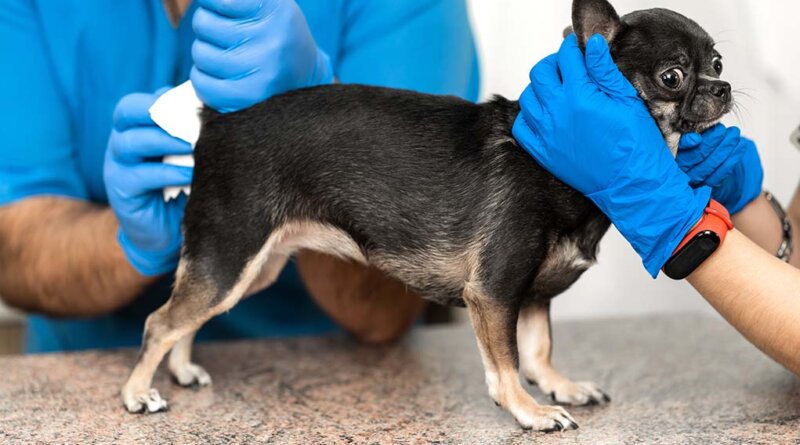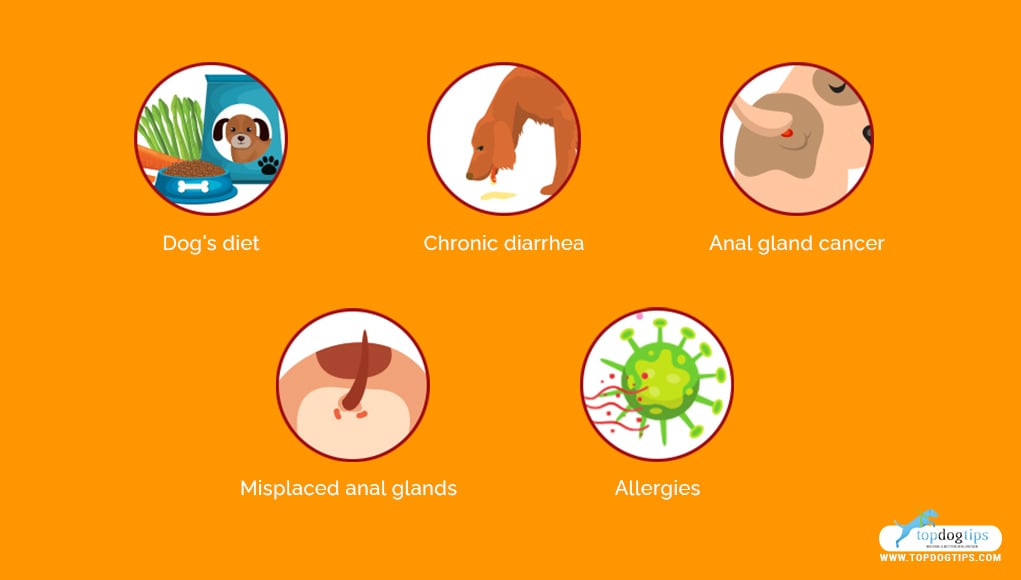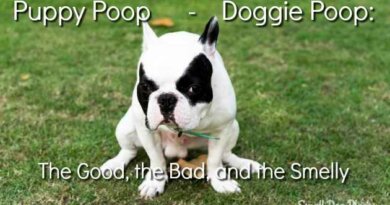How to Drain Anal Glands on Dogs By Yourself
The anal glands on a dog are located on either side of its anus. The glands each contain a sac (located in the middle of the gland) filled with a foul-smelling fluid used in scent marking.
Anal gland problems are not life-threatening and relatively common in dogs.
Healthy anal glands release a small amount of fluid each time your dog has a bowel movement.
However, some canines may develop health issues that impede the gland’s ability to release its fluid.
When the anal sacs are blocked, they can become distended, painful, and even infected.
In the case of said blockage, you either visit a groomer or veterinarian, or you can learn how to drain anal glands on dogs manually by yourself.
You should never ignore your pet’s anal glands if they have become distended. This can result in perianal fistulas (an opening from inside the anus to the skin).
Symptoms of Anal Gland Blockage
Dogs with blocked anal glands typical show the following symptoms:
- Excessive licking of their back ends
- Scooting (dragging their bottoms along the floor or ground)
- Redness around the anus
- Expressing the sacs at “inappropriate” times (indoors by scooting)
- Pus or bleeding from the area around the anus
When to NOT Drain Anal Glands on Dogs
It’s only okay to drain anal glands on dogs by yourself in the first stage – when they’ve just been blocked.
But when the issue has progressed, and if your dog is expressing pain or discomfort, or if you see blood or pus around your dog’s anus, do not attempt to drain them yourself.
Call your veterinarian for an appointment.
What Causes a Blockage in the Anal Glands?
A dog’s diet is usually the culprit when it comes to irritated or blocked anal glands.
Stools that are too soft do not work the anal gland properly. Therefore, the fluid builds up in the sacs rather than being released.
Inexpensive brands of dog food don’t contain enough fiber to harden the stool. Switching to high-fiber dog food may be the solution to blocked glands. Look for these fiber ingredients in a quality kibble:
- Flaxseed
- Carrots
- Legumes
- Apples
- Oats
- Whole grains
- Beet pulp
- Psyllium husk
There are also medical issues that could cause anal gland blockages in dogs, such as chronic diarrhea, anal gland cancer, or misplaced anal glands.
Some allergies (both seasonal and dietary) can also affect your dog’s anal glands.
Dog Breeds Prone to Anal Gland Blockage
Large breed dogs do not usually have a problem with their anal glands.
Small to medium-sized canines are more often affected by impacted or infected anal glands.
For example, owners of Bassett Hounds, Cocker Spaniels, Miniature and Toy Poodles, Chihuahuas, Beagles, Lhasas, and Dachshunds (to name a few) should be more aware and diligent in their pet’s anal gland care and treatment.
How to Drain Anal Glands on Dogs
If you see your pup’s anal glands blocked, but they’re not bleeding or releasing pus, you can drain them yourself. This procedure is relatively straightforward but can get tricky; it’s best performed with two handlers.
Step 1: If you have a small to medium-sized dog, place and secure them on a table. Kneel behind large dogs on the floor, ensure they’re secured in place and comfortable.
Step 2: Locate the anal glands by looking at your pet’s anus – one is found at five o’clock, the other at seven o’clock.
Step 3: Bring another handler to gently but firmly restrain the dog with one arm underneath the head and wrapped around the dog’s neck. Use the other arm to hug the dog close to the body.
Step 4: The person expressing your dog’s anal glands will need to put on a pair of latex (or similar) gloves. Lubricate the glove’s index finger with petroleum jelly or a water-based, pet-friendly lubricant.
Step 5: Lift your dog’s tail and gently insert your lubricated finger into their anus (about one inch forward).
Step 6: Feel for a firm pea or marble-sized object at the aforementioned locations – these are the anal glands.
Step 7: With a paper towel in hand between you and your dog’s anus, gently “milk” the gland using a forward motion (put pressure on the most distal portion of the gland first).
Use gentle pressure, no more than you would use to touch your closed eye. (Note: When the gland is empty, it should be barely palpable.)
Step 8: Wipe the area clean and repeat on the other positioned gland.
Step 9: Once both anal glands have been drained, use a warm soapy washcloth to clean the area thoroughly. This helps get rid of the fishy smell of the anal gland fluid.
And, of course, reward your pup for stillness and cooperation if you need to do this again in the future.
What Does Anal Gland Fluid Look Like?
Normal, healthy anal gland fluid has a thin consistency and is brown.
If the fluid expressed from your pet is thick, chunky or yellow, green, or grey, this may be a sign of an infection or other problem. Contact your veterinarian.
How Often to Drain Dog’s Anal Glands?
Dogs that require help in expressing their anal glands usually run on a three to four-week timetable.
Look for the signs of a blockage by lifting your dog’s tail and taking a look or by the above signs and symptoms.
If your dog’s anal glands become a chronic issue of constant impaction and infections, your veterinarian may discuss removing them altogether (Anal Sacculectomy).
Although this is generally the last resort, it may be in the best interest of your pet’s health.
Summary
Your dog’s anal glands are a natural part of its genetic makeup and a way of scent-marking.
However, action will need to be taken to help relieve the pain and discomfort this condition often brings when they become blocked or infected.
You can learn how to drain anal glands on dogs by yourself at home, but it can be tricky and may not be for everyone.
If you are squeamish about expressing a dog’s anal glands, call in the experts (groomer or veterinarian) and let them show you how to do it.
READ NEXT: 12 Ways to Prevent and Treat Anal Glands in Dogs
Want to share this?








